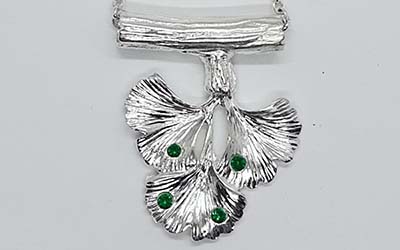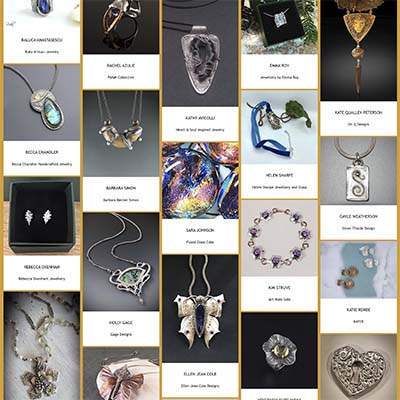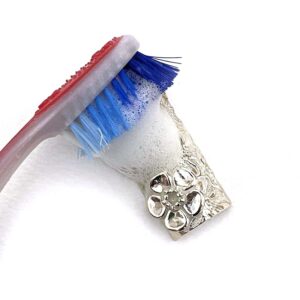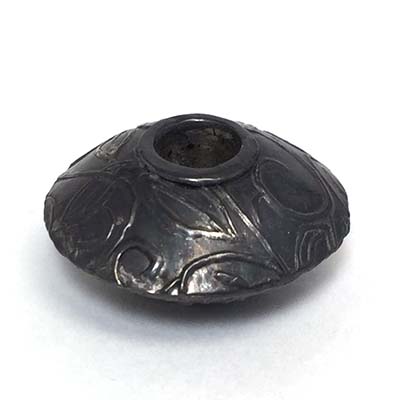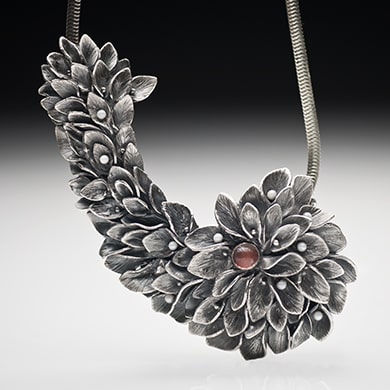Hydrochloric Acid
Hydrochloric acid is sold under the trade names Gosiba, Blackening Agent, Black Max, Jax, and others. They can all be used to add a rich, black, antiqued look to both fine and sterling silver. Applied with a steel brush they will also darken gold. Hydrochloric acid should be applied to room temperature metal right out of the bottle. It creates a deep black patina immediately, and can either be brushed onto the metal, or decanted into a larger, all plastic container for dipping (it will corrode metal parts).
Neutralize the acid remaining on the metal by dipping it in a warm water and baking soda bath.
How -To: Heat water in a bowl and add baking soda until it no longer dissolves. Drop in the patinated work and let sit for a minute or two. Remove and rinse in clear water. Once the neutralizing process is finished, any remaining baking soda liquid can be poured down the drain.
Caution and common-sense safety measures should always be taken when working with this product, but the solution sold for jewelry making is relatively safe to work with. While it is not commercial strength, it is an acid and will sting if you have a cut on your hands. Using a brush may be a safer method than dipping your work.


